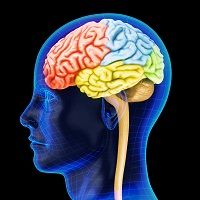COPD Patients Undergo Brain Changes in Fear Zones
Chronic obstructive pulmonary disease (COPD) patients may undergo structural changes to their brains, including the areas that cause breathlessness, fear, and sensitivity to pain.

Chronic obstructive pulmonary disease (COPD) patients may undergo structural changes to their brains, including the areas that cause breathlessness, fear, and sensitivity to pain, according to findings published in CHEST.
Researchers from the University of Leuven in Belgium investigated structural brain changes in COPD patients in order to examine the patients’ suffering from chronic dyspnea, disease-specific fears and avoidance of physical activity. The researchers used MRIs to measure differences in brain region degeneration and regional gray matter among 30 patients with moderate to severe COPD.
The patients were matched with 20 matched healthy control subjects based on sex, height, weight, and body mass index. There were differences, though: the COPD group showed lower lung function in FEV 1 percent predicted, FVC percent predicted and FEV 1/ FVC. The COPD group contained more smokers compared to the population of the control group. All of the participants had normal ranges for anxiety and depression. Patients in the COPD group showed greater levels of fear of dyspnea and fear of physical activity. All of the patients also filled out COPD anxiety questionnaires.
COPD patients showed no generalized cortical degeneration, the researchers reported; however, there was decreased gray matter in some brain regions, including the in posterior cingulate cortex, anterior and midcingulate cortex, hippocampus and amygdala.
The researchers also noted that the levels of patients’ brain degeneration were linked to the length of their COPD disease duration. Individuals with more degeneration demonstrated a greater fear of breathlessness and fear of physical activity — which, in turn, the researchers added, can impact the progression of the disease.
Some of the limitations of the study included the use of the questionnaire, which, while useful, do not fully assess patients’ changes. The researchers suggest that longitudinal study designs should include measures of physical activity, like activity monitors, in order to track changes in relation to activity avoidance in COPD.
“Targeting disease specific fears in patients with COPD might not only improve outcomes of clinical interventions such as pulmonary rehabilitation, but also reverse structural brain changes in these patients,” the study authors concluded.